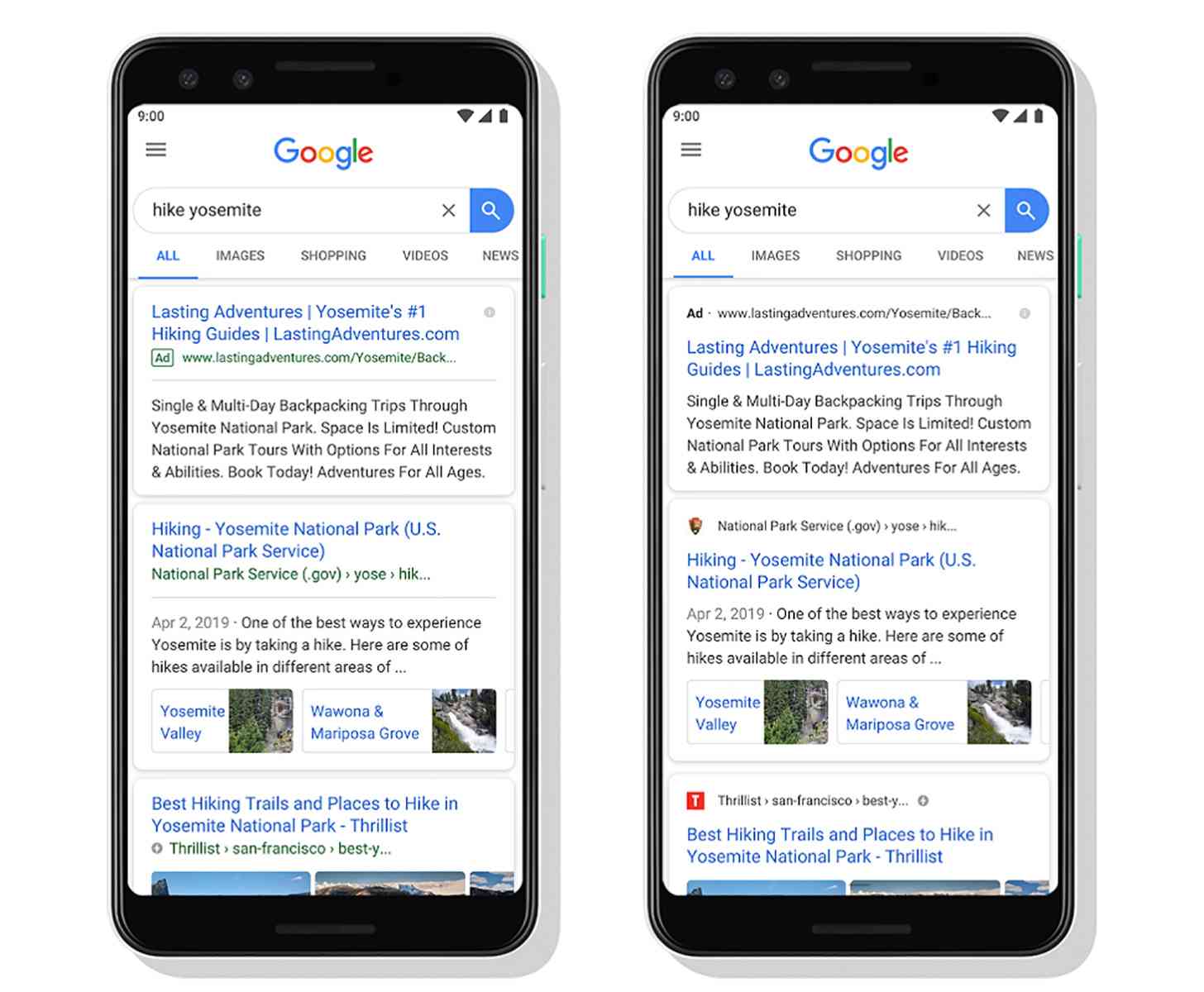Google has updated its mobile search design to highlight a website’s name and favicon. A favicon, most often found in the address bar of your website is a small, iconic image that represents your website


Google has updated its mobile search design to highlight a website’s name and favicon. A favicon, most often found in the address bar of your website is a small, iconic image that represents your website.
The search engine giant has made some important changes that will affect how mobile search results are displayed. Google is now displaying favicons next to organic search listings. It means favicons now assume added importance.
The name of the website and its icon appear at the top of the results, above the title of the specific page being displayed. Until now, Google had not paid much attention to the source of search results displaying a website’s name in a smaller font beneath each link.
The new-look brings branding to the forefront of the search results helping visitors understand where the information is coming from and what pages contain information you are looking for. The design is set to roll out in the “next few days.” Google says the design is “coming first to mobile,” which a spokesperson clarified includes both web searches and the Google app.
How Proper Use of Favicon Will Help You Rank Higher In Mobile Searches
Mobile Internet usage has exceeded fixed access with some countries having more than up to four times higher smartphone vs desktop audience. Mobile search is increasingly important as mobile conversion rates are much higher.
A study from Google reveals that mobile users display a different behavior from that of their desktop counterparts.
There is generally more urgency to the request as they want to immediately find or buy what they are looking for. Study shows that over 50% of consumers that conducted a local Google search via mobile visited a store within a day, compared to 34 percent of desktop users.
Proper use of favicon brings you to the forefront of your target audience. Images have a higher recall value which can help you stand out from your competitors. More visitors mean more click-through-rates which mean higher ranking and a greater probability of conversion.
In other words, clever use of favicon can give you a strategic advantage over your competitors, make your visitors happy and increase conversions. Just as importantly, you can improve how your website ranks in search results.
Please remember that an overwhelming majority of search engine users do not bother to click on the first few links. Top ranking means you could be very close to obtaining a new customer as highly engaged mobile users can easily find you in the first place.
Will This Have Any SEO Advantage?
There may not be too many direct benefits of properly using favicon when it comes to your SEO, but there are certainly a lot of indirect benefits including:
Better Site Usability
The higher the usability of your site, the better its chances of securing top rankings. As mentioned above, favicon saves time and helps users find the bookmarked or visited the website with ease. This enhances usability and could have a bearing on the search rankings.
Bookmarks
It puts you at an advantage over websites that lack it when it comes to saving and keeping a website bookmark on the browser. Google has some mechanism in place for bookmarked sites in which case your site will lose in the absence of a favicon.
Better Click-through Rate
Having a dynamic image at the top of the listing will compel people to click on the link. As a result, the CTR goes up and you will get more leads.
How the World of Organic Search Listings in Mobile Search will Change
Google is now displaying favicons next to organic search listings. It means now favicons assume added importance. The latest update seems small but its impact will be significant in mobile search.
The new-look brings branding to the forefront of the search results helping visitors understand where the information is coming from and what pages contain information you are looking for. “The name of the website and its icon appear at the top of the results card to help anchor each result,” said Google.
With this update, the search engine behemoth sets the stage for Google to continue to evolve the types of content it shows in the search results such as 3D objects, hi-res images, video, etc.
But not all digital marketers are sure of the impact of this update, they keep their fingers crossed and waiting for any impact of the update on Google mobile search. During the testing phase, Google said users found it easier to identify websites with new favicon update. However, only time will tell how it will influence traffic flow to your website.
Why Google has Made This Change
Google always puts user experience at the forefront and that is why it keeps bringing various updates to improve the search experience. Differentiating between, however, organic and paid to list in the mobile search result was always an annoying thing for users. This is going to change forever. Organic listings are getting a new favicon treatment with Google displaying favicons next to organic search results. It has also made changes to the appearance of Google Ads at the top, which now appears at the top of the ad along with the display URL also in black text.
How to Add a Favicon
You can add one yourself if you have coding knowledge or ask your designer to do so. One easy approach is to use a website such as favicon.cc or an online tool.
If your site has a favicon and you need it to visually represent your brand, add a tag to the header with a specific syntax. If you feel difficulty, you can take help of a web designer.

